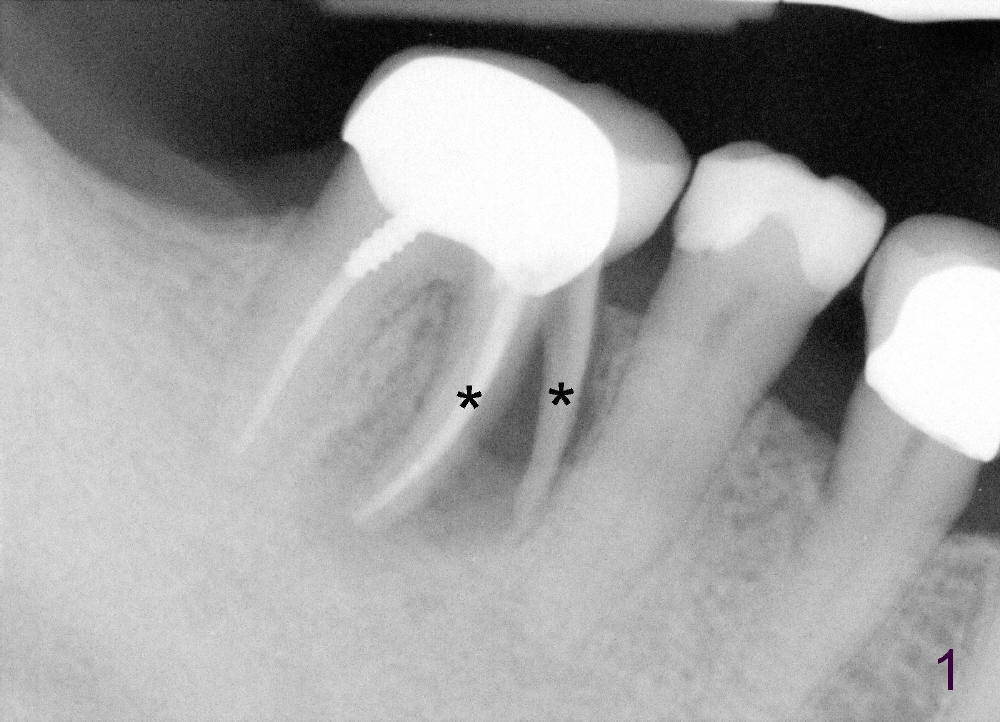
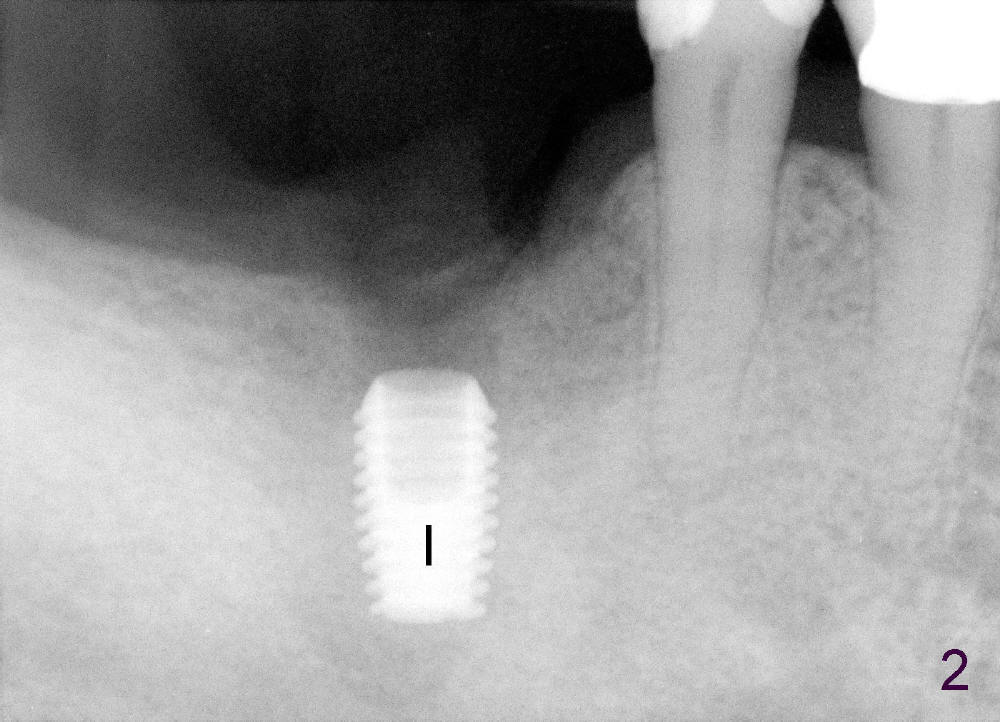
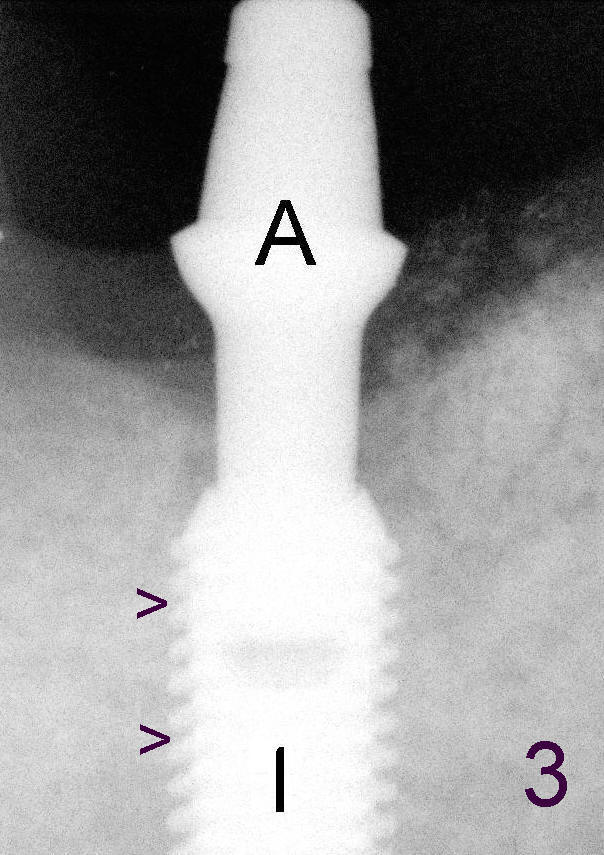
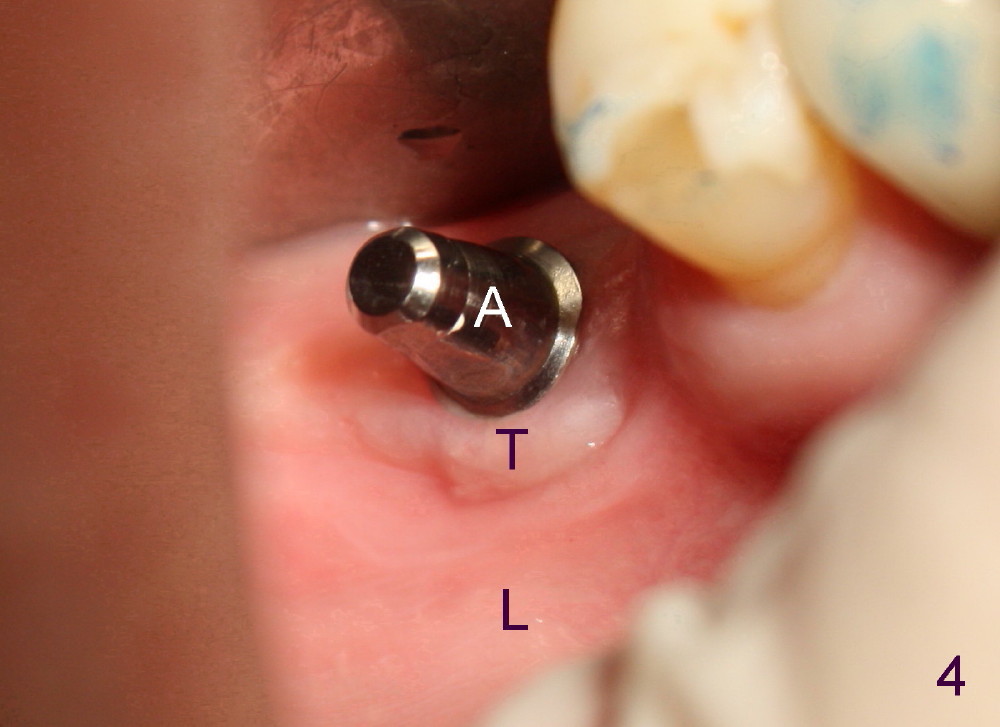
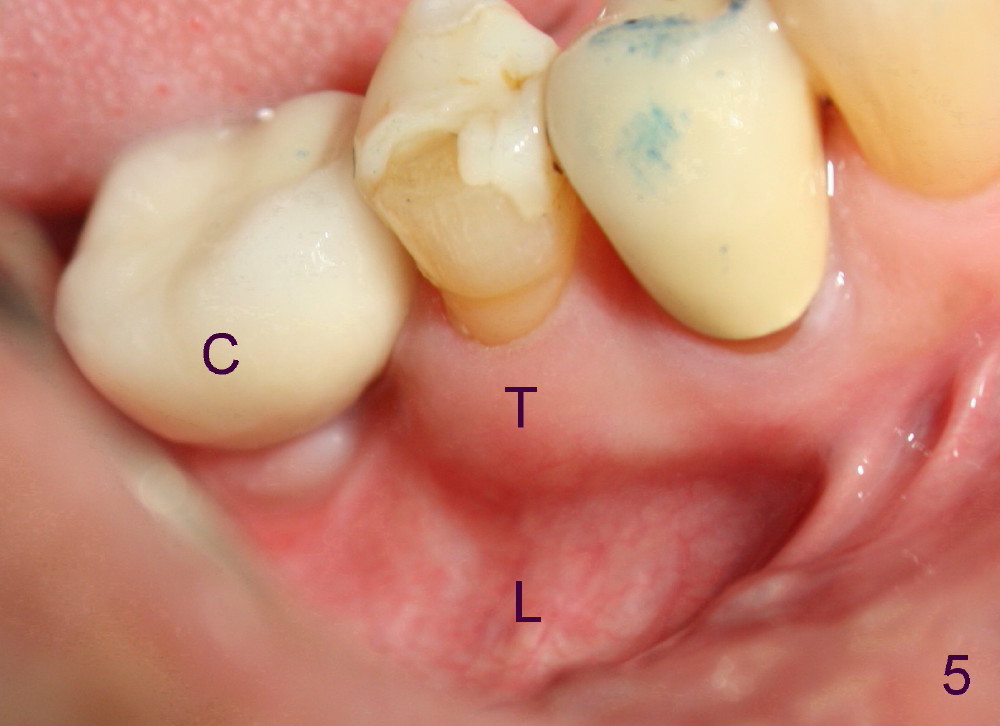
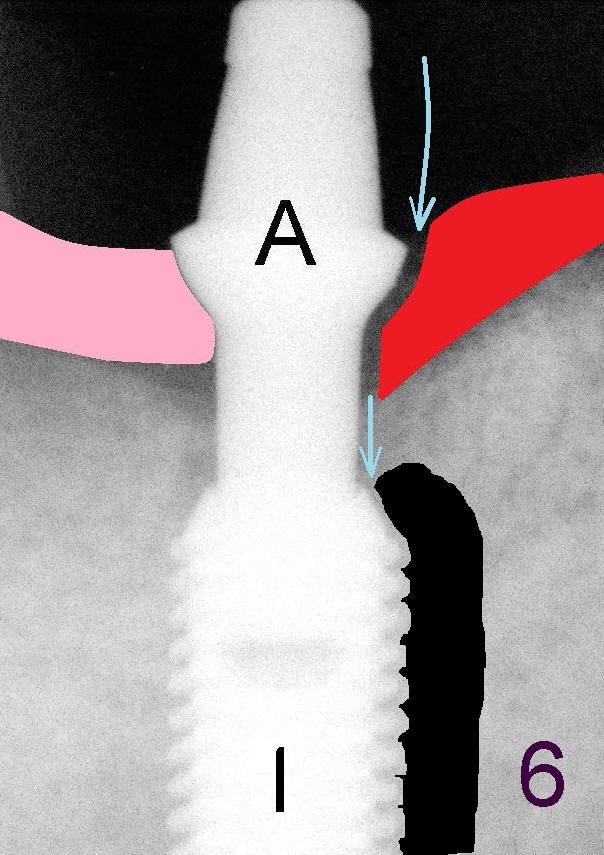
 |
 |
 |
 |
 |
 |
Gums around Implant
There are two types of skin for our hand. The skin over the inside of the hand is tough and thick so that we hold instruments. The skin on the back of the hand is loose and thin so that it is easy to change the position of the hand. There are also two types of gums around our teeth and implants. They perform different tasks for our teeth and implants.
Mr. Chan has pain over his molar on the bottom, because one of its roots splits (Fig.1: *). The tooth is extracted and replaced by an implant (Fig.2: I). A few months later, the implant heals: the bone grows into implant threads (Fig.3 >). One end of an abutment (Fig.3: A) is inserted into the hole of the implant. The other end of the abutment passes through the gums (Fig.4 T/L), sticks into the mouth and receives a crown (Fig.5 C).
There are two types of gums around the implant/abutment (Fig.4) and teeth (Fig.5). The one immediately next to the implant/abutment and teeth is thicker, more whitish (T: tough) than the gums away from the implant/abutment (L, loose). The gums in T zone is so tough that it can sustain friction of food coming from the implant crown and teeth. On the other hand, the gums in L zone is loose, soft and sensitive. The good thing for the L is that it allows our lip and cheek to move around freely, pushing the food back to the biting surface of our implant crown and teeth. The bad thing of the L zone is that it is thin, sensitive and easily bleeding to friction of food. It does not glue to our implant/abutment or the teeth very well.
Fig.6 is a schematic drawing to show how the two types of the gums glue to implant/abutment (in the same way for natural teeth). On the left hand side, the tough gums (pink area) firmly glue to the abutment to form a tight seal so that bacteria cannot go in. There is no infection around the implant underneath. On the right hand side of Fig.6, the loose gums (red area) are not able to stick to the surface of the abutment. There is a gap between the loose gums and the abutment. The gap is big enough for tinny tiny germs to enter (long blue arrow), travel all the way down to the implant (short blue arrow) and cause severe infection in the bone around the implant. The end result is loss of bone around the implant (black area). The implant may be loose. This disease is called peri-implantitis.
If the loose gums happen to be immediately around the natural teeth, gum receding occurs much faster. We need gum surgery to fix this condition.
Compare Fig.4 and 5. You may notice the T zone around the implant is narrower than that around the teeth. This suggests that like the bone, the tough gums are decreasing after extraction. We need to restore the missing teeth with implants as soon as possible. If the tough gums are too little, gum graft may be required before implant.
Xin Wei, DDS, PhD, MS 1st edition 08/20/2012, last revision 09/27/2012